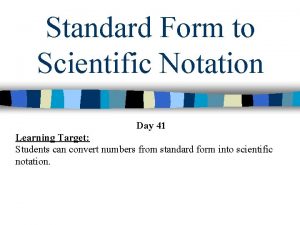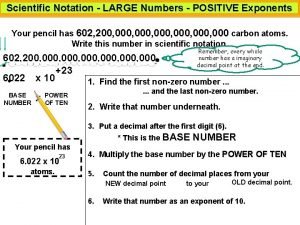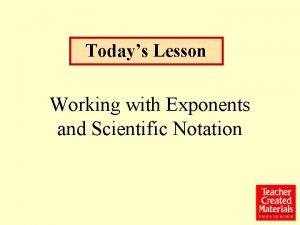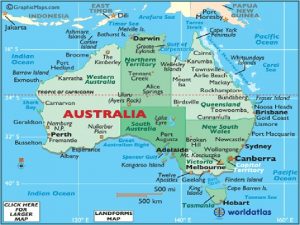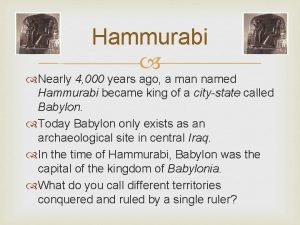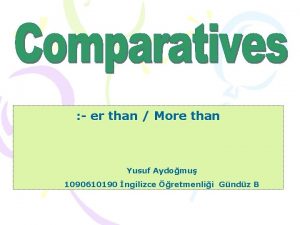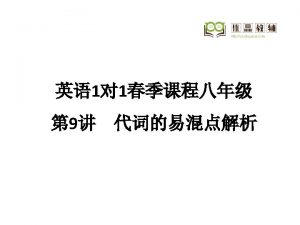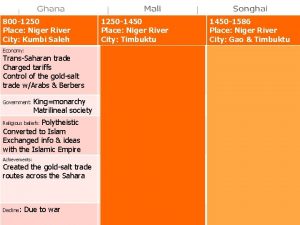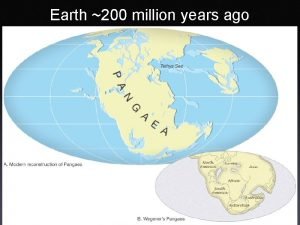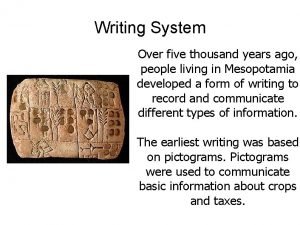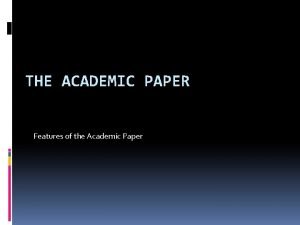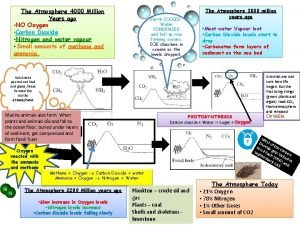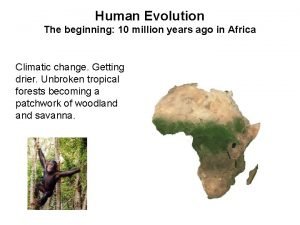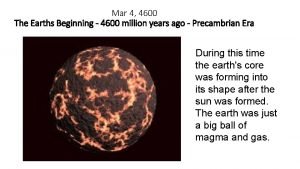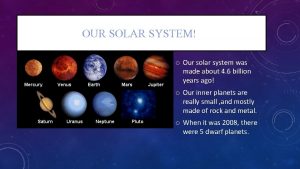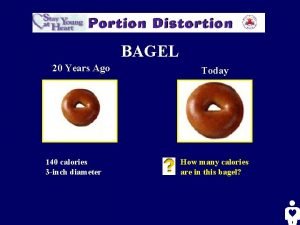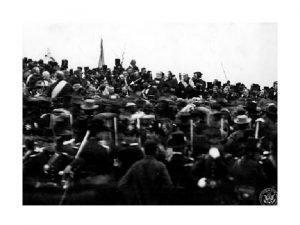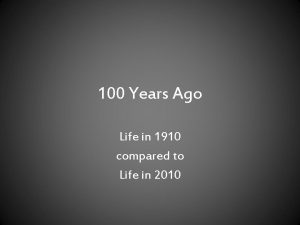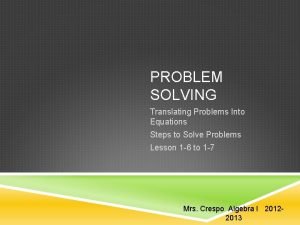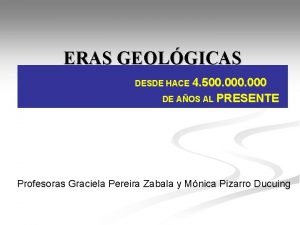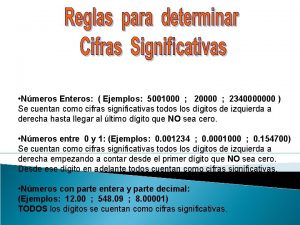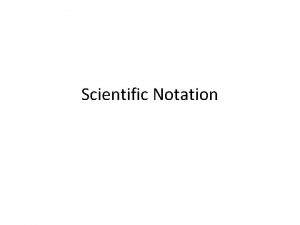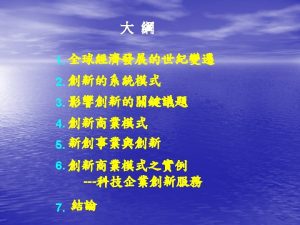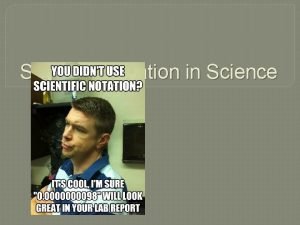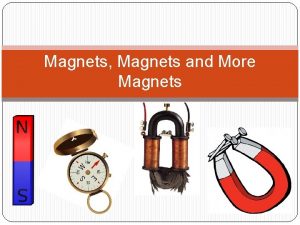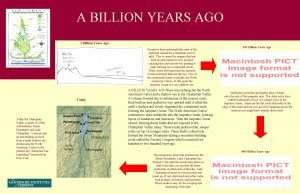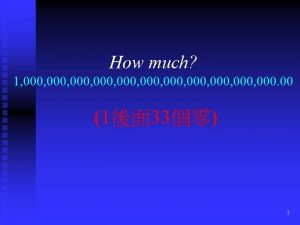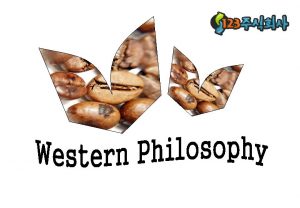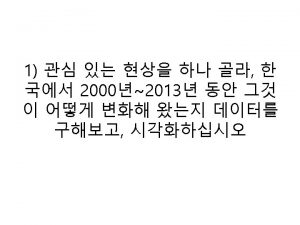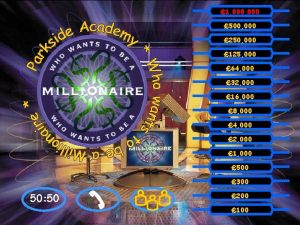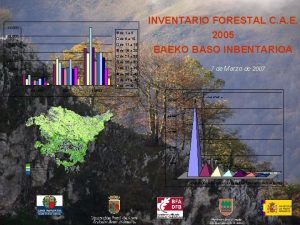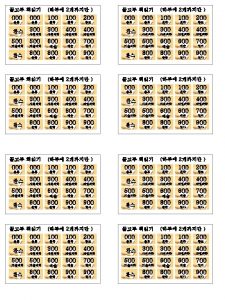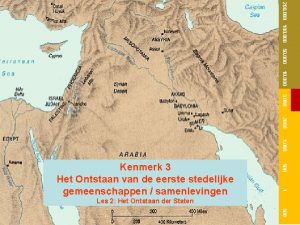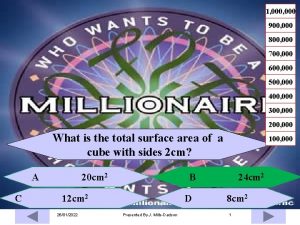Magnetism Magnets More than 2 000 years ago















































- Slides: 47

Magnetism Magnets • More than 2, 000 years ago Greeks discovered deposits of a mineral that was a natural magnet. • The mineral is now called magnetite. Physical Science - Chapter 8 1

Magnetism Magnets • In the twelfth century Chinese sailors used magnetite to make compasses that improved navigation. • Today, the word magnetism refers to the properties and interactions of magnets. Physical Science - Chapter 8 2

Magnetism Magnetic Force • Depending on which ends of the magnets are close together, the magnets either repel or attract each other. • The strength of the force between two magnets increases as magnets move closer together and decreases as the magnets move farther apart. Physical Science - Chapter 8 3

Magnetism Magnetic Field • A magnet is surrounded by a magnetic field. A magnetic field exerts a force on other magnets and objects made of magnetic materials. • The magnetic field is strongest close to the magnet and weaker far away. Physical Science - Chapter 8 4

Magnetism Magnetic Field • The magnetic field can be represented by lines of force, or magnetic field lines. • A magnetic field also has a direction. The direction of the magnetic field around a bar magnet is shown by the arrows. Physical Science - Chapter 8 5

Magnetism Magnetic Poles • Magnetic poles are where the magnetic force exerted by the magnet is strongest. • All magnets have a north pole and a south pole. Click image to play movie • For a bar magnet, the north and south poles are at the opposite ends. Physical Science - Chapter 8 6

Magnetism Magnetic Poles • The two ends of a horseshoe-shaped magnet are the north and south poles. • A magnet shaped like a disk has opposite poles on the top and bottom of the disk. • Magnetic field lines always connect the north pole and the south pole of a magnet. Physical Science - Chapter 8 7

Magnetism How Magnets Interact • Two magnets can either attract or repel each other. • Two north poles or two south poles of two magnets repel each other. However, north poles and south poles always attract each other. • When two magnets are brought close to each other, their magnetic fields combine to produce a new magnetic field. Physical Science - Chapter 8 8

Magnetism Magnetic Field Direction • When a compass is brought near a bar magnet, the compass needle rotates. • The force exerted on the compass needle by the magnetic field causes the needle to rotate. • The compass needle rotates until it lines up with the magnetic field lines. Physical Science - Chapter 8 9

Magnetism Magnetic Field Direction • The north pole of a compass points in the direction of the magnetic field. • This direction is always away from a north magnetic pole and toward a south magnetic pole. Physical Science - Chapter 8 10

Magnetism Earth’s Magnetic Field • A compass can help determine direction because the north pole of the compass needle points north. • This is because Earth acts like a giant bar magnet and is surrounded by a magnetic field that extends into space. Physical Science - Chapter 8 11

Earth’s Magnetic Poles • Currently, Earth’s south magnetic pole is located in northern Canada about 1, 500 km from the geographic north pole. • Earth’s magnetic poles move slowly with time. • Sometimes Earth’s magnetic poles switch places so that Earth’s south magnetic pole is the southern hemisphere near the geographic south pole. Physical Science - Chapter 8 12

Magnetism Magnetic Materials • You might have noticed that a magnet will not attract all metal objects. • Only a few metals, such as iron, cobalt, or nickel, are attracted to magnets or can be made into permanent magnets. Physical Science - Chapter 8 13

Magnetism Magnetic Domains A Model for Magnetism • Groups of atoms with aligned magnetic poles are called magnetic domains. • Because the magnetic poles of the individual atoms in a domain are aligned, the domain itself behaves like a magnet with a north pole and a south pole. Physical Science - Chapter 8 14

Magnetism Lining Up Domains • If you place a magnet against the same nail, the atoms in the domains orient themselves in the direction of the nearby magnetic field. • The like poles of the domains point in the same direction and no longer cancel each other out. Physical Science - Chapter 8 15

Magnetism Lining Up Domains • The nail itself now acts as a magnet. • The nail is only a temporary magnet. • Paper clips and other objects containing iron also can become temporary magnets. Physical Science - Chapter 8 Click image to play movie 16

Magnetism Permanent Magnets • A permanent magnet can be made by placing a magnetic material, such as iron, in a strong magnetic field. • The strong magnetic field causes the magnetic domains in the material to line up. • The magnetic fields of these aligned domains add together and create a strong magnetic field inside the material. Physical Science - Chapter 8 17

Magnetism Permanent Magnets • This field prevents the constant motion of the atoms from bumping the domains out of alignment. The material is then a permanent magnet. • If the permanent magnet is heated enough, its atoms may be moving fast enough to jostle the domains out of alignment. • Then the permanent magnet loses its magnetic field and is no longer a magnet. Physical Science - Chapter 8 18

Magnetism Can a pole be isolated? • Because every magnet is made of many aligned smaller magnets, even the smallest pieces have both a north pole and a south pole. Physical Science - Chapter 8 19

Electricity and Magnetism Electric Current and Magnetism • In 1820, Han Christian Oersted, a Danish physics teacher, found that electricity and magnetism are related. • Oersted hypothesized that the electric current must produce a magnetic field around the wire, and the direction of the field changes with the direction of the current. Physical Science - Chapter 8 20

Electricity and Magnetism Moving Charges and Magnetic Fields • It is now known that moving charges, like those in an electric current, produce magnetic fields. • Around a currentcarrying wire the magnetic field lines form circles. Physical Science - Chapter 8 21

Electricity and Magnetism Moving Charges and Magnetic Fields • The direction of the magnetic field around the wire reverses when the direction of the current in the wire reverses. • As the current in the wire increases the strength of the magnetic field increases. Physical Science - Chapter 8 22

Electricity and Magnetism Electromagnets • An electromagnet is a temporary magnet made by wrapping a wire coil carrying a current around an iron core. • When a current flows through a wire loop, the magnetic field inside the loop is stronger than the field around a straight wire. Physical Science - Chapter 8 23

Electricity and Magnetism Electromagnets • A single wire wrapped into a cylindrical wire coil is called a solenoid. • The magnetic field inside a solenoid is stronger than the field in a single loop. Physical Science - Chapter 8 24

Electricity and Magnetism Electromagnets • If the solenoid is wrapped around an iron core, an electromagnet is formed. Physical Science - Chapter 8 25

Electricity and Magnetism Electromagnets • The solenoid’s magnetic field magnetizes the iron core. As a result, the field inside the solenoid with the iron core can be more than 1, 000 times greater than the field inside the solenoid without the iron core. Physical Science - Chapter 8 26

Electricity and Magnetism Properties of Electromagnets • Electromagnets are temporary magnets because the magnetic field is present only when current is flowing in the solenoid. • The strength of the magnetic field can be increased by adding more turns of wire to the solenoid or by increasing the current passing through the wire. Physical Science - Chapter 8 27

Electricity and Magnetism Properties of Electromagnets • One end of the electromagnet is a north pole and the other end is a south pole. • If placed in a magnetic field, an electromagnet will align itself along the magnetic field lines, just as a compass needle will. • An electromagnet also will attract magnetic materials and be attracted or repelled by other magnets. Physical Science - Chapter 8 28

Electricity and Magnetism Making an Electromagnet Rotate • The forces exerted on an electromagnet by another magnet can be used to make the electromagnet rotate. Physical Science - Chapter 8 29

Electricity and Magnetism Galvanometers • How does a change in the amount of gasoline in a tank or the water temperature in the engine make a needle move in a gauge on the dashboard? • These gauges are galvanometers, which are devices that use an electromagnet to measure electric current. Physical Science - Chapter 8 30

Electricity and Magnetism Using Galvanometers • In a galvanometer, the electromagnet is connected to a small spring. • Then the electromagnet rotates until the force exerted by the spring is balanced by the magnetic forces on the electromagnet. Physical Science - Chapter 8 31

Electricity and Magnetism Electric Motors • A fan uses an electric motor, which is a device that changes electrical energy into mechanical energy. • The motor in a fan turns the fan blades, moving air past your skin to make you feel cooler. • Almost every appliance in which something moves contains an electric motor. Physical Science - Chapter 8 32

Electricity and Magnetism A Simple Electric Motor • The main parts of a simple electric motor include a wire coil, a permanent magnet, and a source of electric current, such as a battery. • The battery produces the current that makes the coil an electromagnet. Physical Science - Chapter 8 33

Electricity and Magnetism A Simple Electric Motor • A simple electric motor also includes components called brushes and a commutator. • The brushes are conducting pads connected to the battery. • The brushes make contact with the commutator, which is a conducting metal ring that is split. • The brushes and the commutator form a closed electric circuit between the battery and the coil. Physical Science - Chapter 8 34

Electricity and Magnetism Making the Motor Spin • Step 1. When a current flows in the coil, the magnetic forces between the permanent magnet and the coil cause the coil to rotate. Physical Science - Chapter 8 35

Electricity and Magnetism Making the Motor Spin • Step 2. In this position, the brushes are not in contact with the commutator and no current flows in the coil. • The inertia of the coil keeps it rotating. Physical Science - Chapter 8 36

Electricity and Magnetism Making the Motor Spin • Step 3. The commutator reverses the direction of the current in the coil. • This flips the north and south poles of the magnetic field around the coil. Physical Science - Chapter 8 37

Electricity and Magnetism Making the Motor Spin • Step 4. The coil rotates until its poles are opposite the poles of the permanent magnet. • The commutator reverses the current, and the coil keeps rotating. Physical Science - Chapter 8 38

Producing Electric Current From Mechanical to Electrical Energy • Working independently in 1831, Michael Faraday in Britain and Joseph Henry in the United States both found that moving a loop of wire through a magnetic field caused an electric current to flow in the wire. • They also found that moving a magnet through a loop of wire produces a current. Physical Science - Chapter 8 39

Producing Electric Current From Mechanical to Electrical Energy • The magnet and wire loop must be moving relative to each other for an electric current to be produced. • This causes the magnetic field inside the loop to change with time. • The generation of a current by a changing magnetic field is electromagnetic induction. Physical Science - Chapter 8 40

Producing Electric Current Generators • A generator uses electromagnetic induction to transform mechanical energy into electrical energy. • An example of a simple generator is shown. In this type of generator, a current is produced in the coil as the coil rotates between the poles of a permanent magnet. Physical Science - Chapter 8 41

Producing Electric Current Switching Direction • In a generator, as the coil keeps rotating, the current that is produced periodically changes direction. • The direction of the current in the coil changes twice with each revolution. Physical Science - Chapter 8 42

Producing Electric Current Generating Electricity for Your Home • The rotating magnets are connected to a turbine (TUR bine) a large wheel that rotates when pushed by water, wind, or steam. Physical Science - Chapter 8 43

Producing Electric Current Direct and Alternating Currents • Because power outages sometimes occur, some electrical devices use batteries as a backup source of electrical energy. • However, the current produced by a battery is different than the current from an electric generator. Physical Science - Chapter 8 44

Producing Electric Current Direct and Alternating Currents • A battery produces a direct current. • Direct current (DC) flows only in one direction through a wire. • When you plug your CD player or any other appliance into a wall outlet, you are using alternating current. Alternating current (AC) reverses the direction of the current in a regular pattern. Physical Science - Chapter 8 45

Producing Electric Current Transformers • A transformer is a device that increases or decreases the voltage of an alternating current. • A transformer is made of a primary coil and a secondary coil. • These wire coils are wrapped around the same iron core. Physical Science - Chapter 8 46

Producing Electric Current Transformers • As an alternating current passes through the primary coil, the coil’s magnetic field magnetizes the iron core. • The magnetic field in the primary coil changes direction as the current in the primary coil changes direction. Physical Science - Chapter 8 47
 Lirik lagu more more more we praise you
Lirik lagu more more more we praise you More more more i want more more more more we praise you
More more more i want more more more more we praise you 97 700 000 000 000 000 000 000 in scientific notation
97 700 000 000 000 000 000 000 in scientific notation 602 200 000 000 000 000 000 000 in scientific notation
602 200 000 000 000 000 000 000 in scientific notation 71 000 in scientific notation
71 000 in scientific notation How long is four score years
How long is four score years Australia 50 000 years ago
Australia 50 000 years ago 4 000 years ago
4 000 years ago 090-0000-0000
090-0000-0000 More er than
More er than Half life more than 2 less than 4
Half life more than 2 less than 4 It is greater than god and more evil
It is greater than god and more evil 8 years ago today
8 years ago today Africa 1000 years ago
Africa 1000 years ago Earth 200 million years ago
Earth 200 million years ago Five thousand years ago
Five thousand years ago Once upon a time there lived a king who was a fine man
Once upon a time there lived a king who was a fine man Technicom 15 years ago as a small
Technicom 15 years ago as a small It is easy to forget how difficult life was 50 years ago.
It is easy to forget how difficult life was 50 years ago. 125 years ago today
125 years ago today 310 million years ago
310 million years ago 4000 million
4000 million Two years ago jenny was diagnosed with schizophrenia
Two years ago jenny was diagnosed with schizophrenia 10 million years ago
10 million years ago Earth 4600 million years ago
Earth 4600 million years ago Saturn 4 billion years ago
Saturn 4 billion years ago 3 inch bagel
3 inch bagel Halloween 2000 years ago
Halloween 2000 years ago Four score and twenty years ago
Four score and twenty years ago Compare and contrast fashion today with twenty years ago
Compare and contrast fashion today with twenty years ago Four scores and seven years ago
Four scores and seven years ago Family life 100 years ago
Family life 100 years ago Shenzhen 30 years ago
Shenzhen 30 years ago Apatosaurus herbivore carnivore
Apatosaurus herbivore carnivore Goat years to human years
Goat years to human years 300 solar years to lunar years
300 solar years to lunar years Aaron is 5 years younger than ron
Aaron is 5 years younger than ron Ajayan is ten years older than vijayan
Ajayan is ten years older than vijayan Translate
Translate 4 500 000 000
4 500 000 000 Milli kilo centi
Milli kilo centi 60 000 000
60 000 000 1,000 x 3,000
1,000 x 3,000 2,340,000,000
2,340,000,000 Scientific notation advantages
Scientific notation advantages 240 000
240 000 450 000 in scientific notation
450 000 in scientific notation Express 4,980,000, 000 in scientific notation.
Express 4,980,000, 000 in scientific notation.


